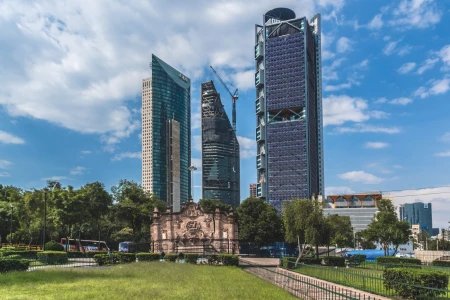Public infrastructure for sustainable development in times of crisis
Public infrastructure is a fundamental asset for economic growth and social welfare, which allows society access to medical care, education, decent housing, public security, justice, health, and is even vital for cultural and sports promotion.
The pandemic caused by Covid-19 showed us the importance of having a robust, solid and efficient public infrastructure; unfortunately, it also limited the government budget due to public spending for mitigation actions and response to the economic effects of the pandemic.
At this juncture, Public Private Partnerships (PPPs) represent the unbeatable option to encourage the participation of the private sector to build, develop, improve, operate and maintain public infrastructure with high standards of quality, competitiveness, social profitability and transparency, which It allows governments the specialized management of essential services for citizens.
To understand the benefits of PPPs, time is the key: first, a contract is signed in which a payment amount is set that will never change for 25 years; afterwards, the private initiative makes the total investment required for the construction, operation, maintenance and equipment of works. This initial period lasts approximately two years, in which the private initiative assumes the risks of price increases in construction supplies and operating supplies during the decades of maintenance.
Once the work is finished, the operation of the infrastructure begins. The private initiative is in charge of the administration, maintenance and adequate functioning of the building and its equipment, in such a way that the government can dedicate itself to what it knows how to do best; For example, if it is a hospital, the operator is in charge of the food for the patients, the stretcher bearers, the cleaning of all areas, solid and sanitary waste, as well as the maintenance, repair and replacement of equipment that fails; the government is dedicated solely to health, having the sole responsibility for supplying medicines and quality medical and nursing personnel.
Another example could be a school, where the private initiative finances, builds and equips the educational establishment to later manage it with cleaning, garden maintenance, sports and cultural infrastructure, laboratories, workshops, technological, digital and library equipment; that is, all the elements required by students and teachers for quality education. The government would focus on talent, quality and educational direction.
It is important to highlight that without the total initial investment made by the private initiative, it is very likely that the government will not be able to build, for example, a general hospital for which more than 1,300 million pesos would have to be spent. In addition, through the PPPs, the government can generate savings of 35% of the total for each project.
Due to the above, the Inter-American Development Bank considers that Public Private Partnerships in Latin America are essential for economic recovery. Mexico, Chile and Brazil are the countries that have promoted this investment model the most; while Guatemala, Panama, Peru and Colombia are advancing in their consolidation.
* José Gabriel Bueno is Director of International Infrastructure at Marhnos




